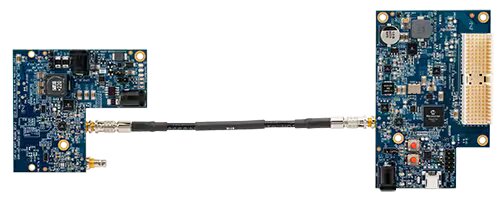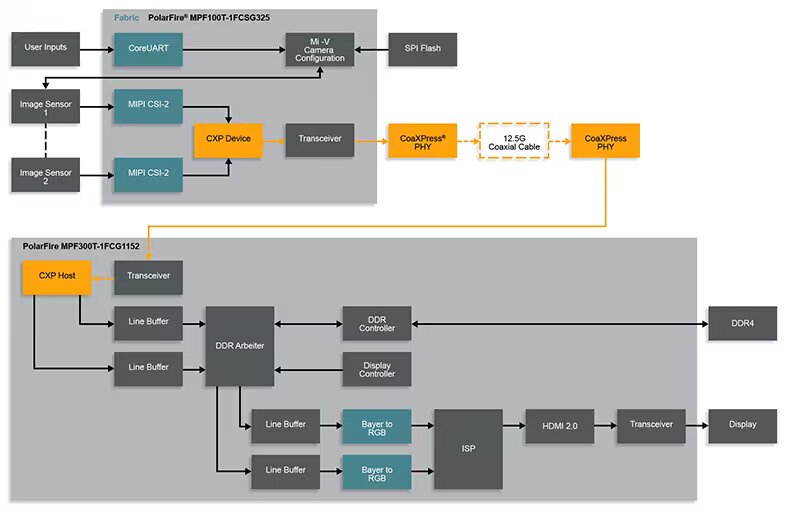In recent years, there has been an explosive demand for high-resolution, bandwidth-hungry imaging technologies that integrate Artificial Intelligence (AI) with an increased focus on real-time analytics and edge computing. Edge computing, unlike centralized cloud computing, is a distributed computing paradigm that improves response times and saves bandwidth by making compute resources available close to the data sources. With the ever-burgeoning Internet of Things (IoT), an increasing number of commercial and industrial applications are relying on an interconnected web of sensor-based, digital and mechanical machines to monitor and control tasks. At the core of the IoT are wireless-enabled embedded systems, real-time analytics and machine learning inference.
Implementation Challenges and Requirements
These systems evidently constitute two core elements – a computing system and a transport mechanism. Challenges in designing such systems include efficient accelerated performance with predictable outcomes plus a flexible, error-free serial link that supports high data rates and are scalable. However, the most significant design constraints for an edge computing device are power and size – some of these devices could be deployed in remote locations or might require an uninterrupted power supply for critical applications while conforming to strict form-factor requirements such as in automotive vision systems, military surveillance, medical equipment, high-precision industrial tools and more.
Microchip’s Comprehensive Solution
Fully cognizant of the need for intelligent vision systems and their associated challenges, we have developed the lowest power, smallest form factor, cost-optimized solution for all your multi-Gigabit, uncompressed, video and data needs. The solution integrates our PolarFire® Field-Programmable Gate Arrays (FPGAs) with our CoaXPress® 2.0 transceivers to enable high-speed serial transmission of imaging data from multiple cameras to the FPGA for image signal processing.
Reference Design Description
The PolarFire CoaXPress 12G Design employs dual 4K camera sensors connected to a PolarFire MPF100T FPGA over the MIPI CSI-2 protocol. The FPGA performs an 8b/10b encoding operation and re-organizes the incoming stream into data packets defined by the CoaXPress protocol. This signal is transmitted by an onboard EQC125X40 CoaXPress transceiver, over a 50m coaxial cable to another EQC125X40 transceiver that reconstructs the transmitted signal from the attenuated high-speed received signal. This board is connected to a PolarFire video kit, MPF300-VIDEO-KIT-NS, over an FPGA Mezzanine Card (FMC) [BTC1] connector; where a PolarFire device with 300,000 Logic Elements (LE) carries out the 8b/10b decoding followed by any desired image processing or intelligent algorithmic processing. Amongst a host of other interfaces, the board also supports an HDMI output to display the received signal on a screen. So, you have an end-to-end demonstration of an embedded vision system.
The total power drawn by the above design is < 1W – the lowest power available on the market. Additionally, with the PolarFire FPGA offered in form factors as small as 11 x 11 mm and the CoaXPress 2.0 transmitter/receiver/repeater offered in a tiny 4 x 4 mm package, the design is dramatically optimized for both power and size! Our solution is well suited for creating next-generation embedded vision platforms that integrate AI and Machine Learning (ML).
PolarFire FPGA
PolarFire FPGAs deliver the industry’s lowest power in mid-range densities and provides defense-grade security and exceptional reliability. The product family spans from 100K to 500K LEs, features 12.7 Gigabit-per-second (Gbps) transceivers, a robust DSP and high-speed memory resources. PolarFire FPGAs are great options for any design that requires high-bandwidth video signals and power over coaxial cables. PolarFire FPGAs are flexible solutions that provide a suite of image processing IP to support popular imaging and video protocols including MIPI CSI-2 TX, MIPI CSI-2 RX, HDMI 1.4 TX, HDMI 2.0, DSI, and HD/3G/6G/12G SDI.
CoaXPress 2.0 Technology
CoaXPress technology is an open and royalty-free asymmetric, high-speed, point-to-point open serial communication standard for high-performance machine vision, industrial inspection and traffic monitoring systems. It provides a state-of-the-art method for connecting high-performance, high-resolution cameras to high-speed capture cards—which are also known as frame grabbers—via standard, off-the-shelf 75Ω coaxial cables. Offering a significant improvement in speed over CoaXPress v 1.1, CoaXPress 2.0 extends the data transfer rate up to 12.5 Gbps for cables lengths of up to 40m, and up to 40 Megabits per second (Mbps) for bidirectional communications. It is in fact, the only 12.5 Gbps standard that provides simultaneous video, camera control, and triggering over a single coaxial cable, along with 13W of DC power at 24 VDC, with real-time cable link quality check.









